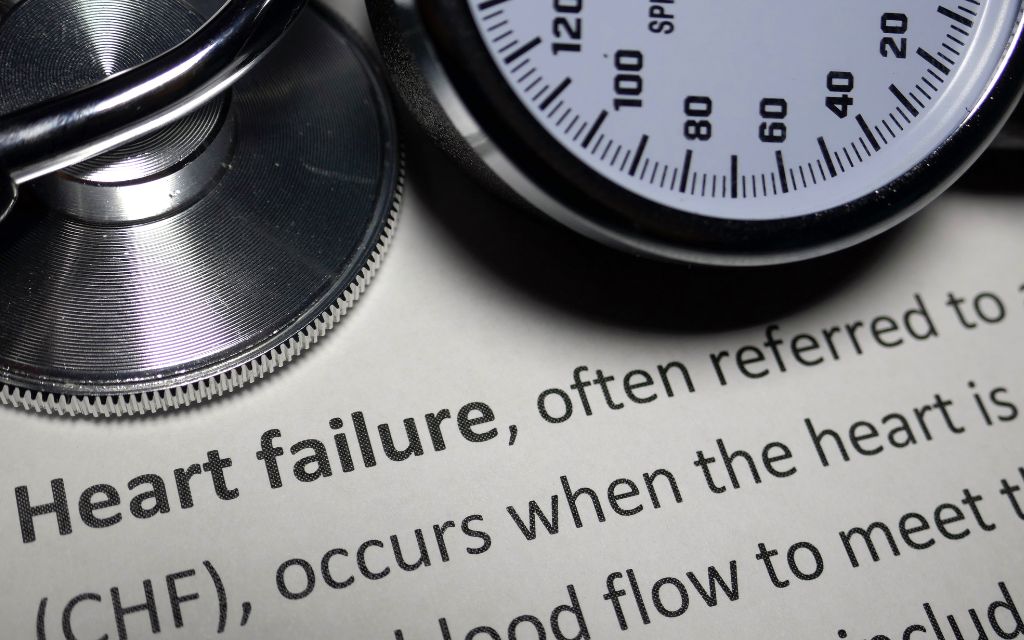1.Nursing diagnosis: Excess fluid volume
Some CHF patients may develop pulmonary or systemic congestion. This could be due to pulmonary edema or pitting edema in the lower extremities.
Heart failure results when the kidney has a poor perfusion. It cannot excrete excess sodium and water. It leads to water retention in the body.
Note: wherever sodium goes , water follows. So if sodium is excreted, more water is excreted. If sodium is retained in the body, the same applies for water.
May be related to:
- Excess sodium intake
- Compromised regulatory mechanism ( increased secretion of ADH, reduced glomerular filtration)
Evidenced by
- Pulmonary congestion
- Oliguria
- Orthopnea
- Weight gain
- Hypertension
- Edema in extremities
Note: ADH helps the body to converse fluid and reduces urine output. Poor perfusion ( passage of blood) to the kidney results in reduced glomerular filtration.
Expected Outcomes
- Demonstrate stabilized fluid volume with balanced intake
and output
- Verbalize understanding of dietary and fluid restrictions
Nursing Interventions
- Monitor urine output
Note the amount and color of the urine. Urine output may be less due to reduced renal perfusion.
- Assess for peripheral edema and Jugular vein distension(JVD)
The signs to look out for in fluid retention include edema in the lower legs and feet or generalized edema in the entire body known as anasarca. But the most prominent sign of fluid overload is JVD.
- Monitor breath sounds
Fluid retention often leads to pulmonary congestion. Upon assessment dyspnea and dry cough with blood-tinged sputum may be prominent.
- Maintain upright position
Most CHF patients have orthopnea and need to lie either fowler’s or semi- fowler’s to breathe well. This position helps aid lung expansion.
- Administer Medications
Diuretics: it increases the rate of urine flow and inhibits the reabsorption of sodium and chloride in the renal tubules.
Potassium Supplements: The body loses potassium as a result of diuretics therapy.
Note: The body cannot store potassium and must be taken on a daily basis to replace the lost electrolytes.

2.Nursing diagnosis: Decreased cardiac output
Some disease conditions weaken the cardiac muscle or narrow the blood vessels. This makes it difficult for the heart to pump or fill blood to meet the body’s requirements.
May be related to:
- Altered afterload ( vascular resistance)
- Altered contractility ( valvular defects and ventricular aneurysm)
Evidenced by:
- Cyanosis
- Clammy skin
- Oliguria
- Tachycardia
Expected outcomes:
- Improve myocardial contractility and systemic perfusion.
- Prevent complications
Nursing Interventions
- Auscultate apical pulse
Assess heart rate and rhythm. Note for dysrhythmia and document. Tachycardia could be present.
- Inspect skin for pallor and cyanosis
Pallor indicates anemia and cyanosis indicates hypoxemia. It’s important to observe this as it needs urgent intervention.
- Monitor urine output
Decreased cardiac output affects renal perfusion. The kidney responds by withholding sodium and water.
Urine output is less frequent in the day because fluids move to the tissues. While it’s more in the night because of lying down flat on the bed at night
- Provide calm and quiet environment
It helps to reduce stress and reduce blood pressure.
- Administer supplemental oxygen
Intake of oxygen helps to combat effects of hypoxia and ischemia.
- Administer medications
A variety of medications ( usually diuretics, beta blocker, vasodilator) may be used to improve contractility and reduce congestion.
3.Nursing Diagnosis: Impaired gas exchange
Inadequate blood flow to the lungs for gas exchange due to accumulation of blood in the lungs decreases perfusion to tissues and organs. Pulmonary congestion is due to accumulation of blood in the lungs.
May be related to:
- Pulmonary congestion
- Changes to the alveolar-capillary membrane.
Evidenced by
- Dyspnea
- Anxiety
- Tachycardia
- Abnormal arterial blood gas (ABG) level
- Changes in respiratory rate, depth or rhythm.
Expected outcomes
- Patient ABGs level will fall within normal range
- Patient’s oxygen saturation will increase above 95 %
Note: Normal ABG’S level differs with age. PaO2 (75 – 100 mmHg), PaCO2 ( 35 – 45 mmHg).
Nursing Interventions
- Auscultate breath sounds
Due to pulmonary congestion patients may have crackles, wheezing.
- Monitor ABG Level
ABG’s indicate the amount of CO2 and O2 in the blood. Abnormal CO2 in the blood indicates the patient is experiencing respiratory alkalosis which can be fatal if urgent care isn’t given.
- Educate on coughing and deep breathing exercise.
It helps patients breathe effectively and efficiently. It prolongs expiration time and reduces dry unproductive cough.
- Maintain a Fowler position
Most CHF patients have orthopnea and need to lie either fowler’s or semi- fowler’s to breathe well. This position helps aid lung expansion.
- Administer supplemental oxygen
Intake of oxygen helps to combat effects of hypoxia and ischemia.
4.Nursing Diagnosis: Activity Intolerance.
The inability of oxygen to meet up with patients body demands and poor perfusion to the muscles and tissues causes fatigue and weakness.
May be related to
- Imbalance between oxygen supply and demand
- Generalized weakness
Evidenced By
- Exertional dyspnea
- Verbalize fatigue
Expected outcomes
- Participates in desired outcomes
Nursing Interventions:
- Assess level of fatigue
Note the precipitators and causes of fatigue.
- Evaluate accelerating activity intolerance
This gives insight to how much activity the patient can tolerate and measure if the patient’s condition is improving or not.
- Provide assistance with daily activities of living
This helps the patient to converse energy and prevent fatigue.
Sharing is caring! Share this care plan with your nursing friends!
Sources
Hinkle, J. L., & Cheever, K. H. (2022). Brunner & Suddarth’s textbook of medical-surgical nursing. 15th edition. Philadelphia, PA: Wolters Kluwer Health.
Moorhouse, M. F., & Moor, A. C. (2019). Nursing care plans: guidelines for individualizing client care across the life span. Philadelphia, PA: F.A. Davis Company.
Nurse Together. https://www.nursetogether.com/heart-failure-nursing-diagnosis-care-plan
Saunders, N. K. (2023). Saunders NCLEX-RN Comprehensive Review (7th ed.). Elsevier.
